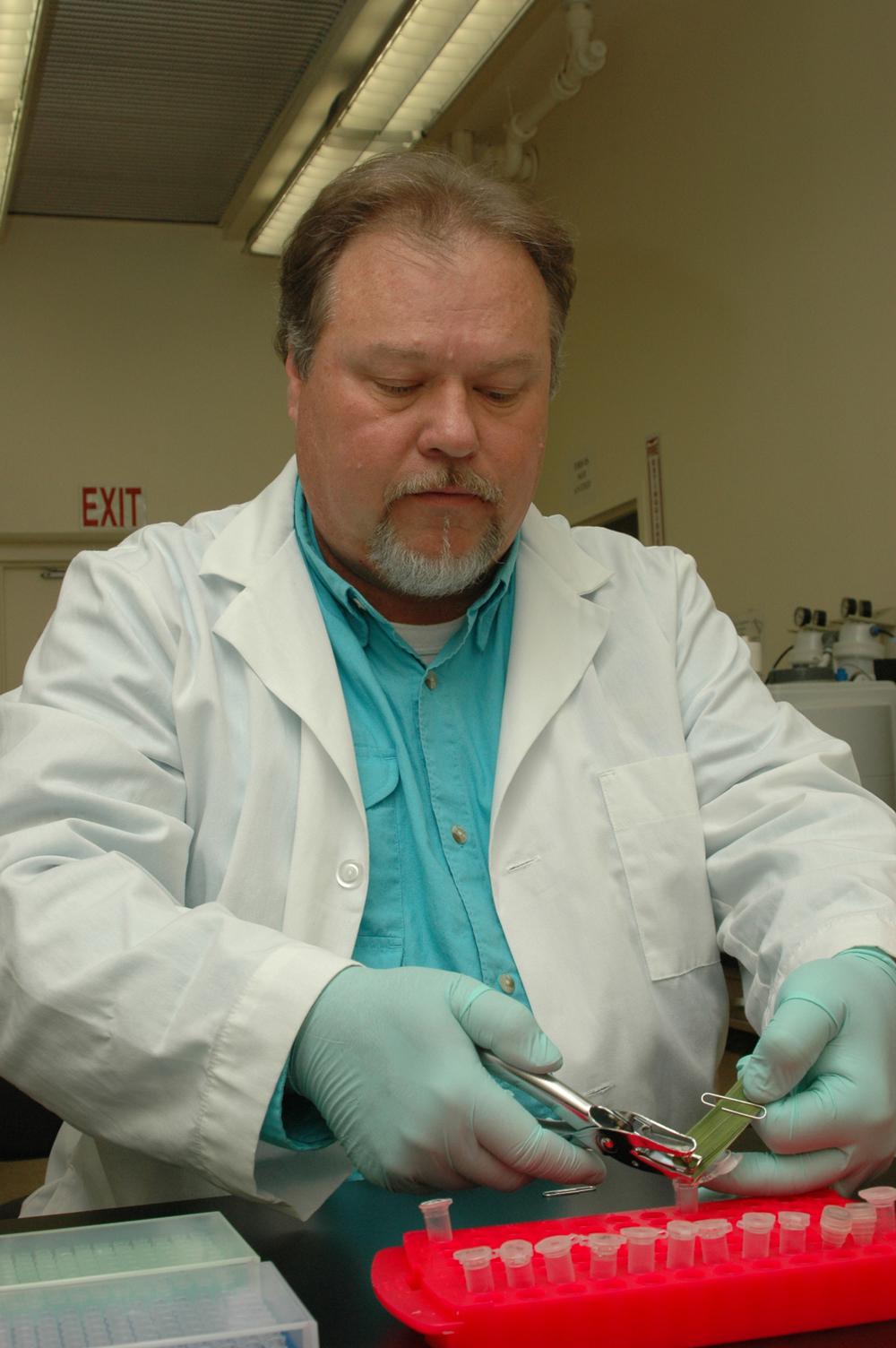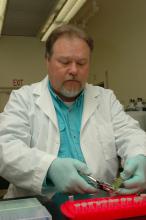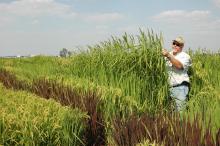Information Possibly Outdated
The information presented on this page was originally released on April 10, 2008. It may not be outdated, but please search our site for more current information. If you plan to quote or reference this information in a publication, please check with the Extension specialist or author before proceeding.
Mississippi leads project to reveal genetic markers
By Robert H. Wells
Delta Research and Extension Center
STONEVILLE -- A multi-state project to reveal genetic markers for some of the Mid-South's best rice breeding lines in history is underway with the goal to produce a genetic map of about 470 of the most successful rice varieties.
Researchers use genetic markers to predict the presence or absence of traits. The project, known as an association mapping of historic rice breeding lines, will tie observable, or phenotypic, traits, such as plant height, with the corresponding genetic markers by using advanced genetic detection technology.
RiceCAP, a multi-institution, multi-state program that promotes biotechnology research in rice is funding the project, which is an initiative through the U.S. Department of Agriculture.
“There is a wealth of information that can come out of this research,” said Walter Solomon, a Mississippi State University doctoral student who is leading the project. “It's going to give rice breeders more information about what's in their program at the molecular level and how genetically diverse it is.”
To choose certain phenotypes, rice breeders selected major traits they consider important to their breeding program. These included heading, maturity date, leaf length, number of seed per panicle, seed color, seed length and seed shape.
This summer, researchers in Mississippi, Arkansas and Louisiana will plant the historic breeding lines and evaluate them for the selected traits.
Jim Oard, a rice geneticist with the Louisiana State University AgCenter in Baton Rouge, will oversee the collection of the phenotypic data at the Louisiana location. He also will assist Solomon with connecting the phenotypic data to the genetic data.
“We want to determine if association mapping will quickly identify those genes or markers that will help the breeders release new varieties,” Oard said. “Any tool to develop new varieties in a shorter period than before will be welcome.”
Anna McClung, a research geneticist with the USDA-Agricultural Research Service National Rice Research Center in Arkansas and center director for the USDA-ARS Rice Research Unit in Texas, is an advisor on the project. She will oversee the collection of phenotypic trait data at the Arkansas location.
“The outcome of this project will provide the next stepping stone to transfer molecular marker technology to U.S. rice breeders,” McClung said. “Ultimately it will further empower breeders to select traits that are important to the U.S. rice industry. Selecting for the presence or absence of genes directly is more effective than selecting for traits in the field, because traits are influenced by weather and growing conditions whereas genes are not.”
Solomon grew the rice breeding lines in 2007 at the Delta Research and Extension Center in Stoneville to produce enough seed for the phenotypic research in 2008. From that population, Solomon also collected leaf tissue samples for DNA extraction.
Brian Scheffler, head of the Mid-South Area Genomics Laboratory with USDA-ARS in Stoneville, serves as a principal investigator and advisor on Solomon's project. He said new methods have been developed to map traits faster and are less expensive than the previous marker system.
“As an example, we might be looking at a cost savings of about 60 percent compared to (the previous system) when looking at testing one DNA marker,” Scheffler said. “The savings in data analysis time is reduced from four to eight weeks to just a few days.”
Solomon said the association analysis of the historic rice lines should be finished by mid-fall 2008.
At the end of the project, the historic population, its genetic data and its phenotypic data will be available to the public through a seed bank database. Breeders will be able to access the database to select desirable plants for their programs.
“The new method will generate a huge amount of genetic marker data from the historic population,” Solomon said. “This summer, we're going to look at a lot of phenotypic characteristics, including those that are good indicators of yield potential. If we can find markers for these traits, breeders will have a tool to evaluate their plants before they are even planted.”
Contact: Walter Solomon, (662) 686-3281




